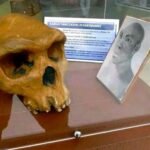Southern Greater Kudu
- Tragelaphus strepsiceros strepsiceros
- IUCN Status: Least Concern
- Trend: decreasing

- Kingdom: Animalia
- Phylum: Chordata
- Class: Mammalia
- Order: Artiodactyla
- Family: Bovidae
- Subfamily: Bovinae
- Genus: Tragelaphus
Share:
General Information
A very beautiful antelope with long twisting spiraled horns displayed by the males which if straightened have been known to reach about 188cm. Kudu is the KhoiKhoi word for antelope. They are not territorial.
Fun Facts!
Description
- Shoulder height: 160 cm
- Length: 185–245 cm
- Weight: 120 to 315 kg
- Lifespan: 7 to 8 yrs in the wild, and up to 23 yrs in captivity
Ecology and Behaviour
They are active throughout the day and can usually be seen spreadout in small groups or solitary. They are known to be purely browsers and prefer the natal mahogony tree or Trichelia emetica and wherever the greater kudu have browsed, they leave a peculiar ‘browse line’ that looks as if they’ve been pruned by clippers.
Predators of the greater kudu generally consist of lions, spotted hyenas, cheetahs, leopards, African wild dogs and sometimes nile crocodiles. They are equipped with a great camouflage which helps them evade predators when alarmed by simply remaining still. They also have acute hearing and can rotate their ears in almost 360 degrees. They are also capable of jumping about 2m from a stationary position despite their weight.
Conservation
It is listed as “Least Concern” on the IUCN Red list.
Distribution and Habitat
There are large populations in the luangwa valley and kafue national park. The Southern greater kudu can be found almost throughout Southern and eastern Africa.
Interaction with humans
The greater kudu have been targeted by poachers for meat and horns. Their horns have been used to make a Jewish ritual horn known as a Shofar, blown at Jewish New Year festival.
No donation to this project yet.
| M | T | W | T | F | S | S |
|---|---|---|---|---|---|---|
| 1 | 2 | 3 | 4 | 5 | 6 | 7 |
| 8 | 9 | 10 | 11 | 12 | 13 | 14 |
| 15 | 16 | 17 | 18 | 19 | 20 | 21 |
| 22 | 23 | 24 | 25 | 26 | 27 | 28 |
| 29 | 30 | 31 | ||||


